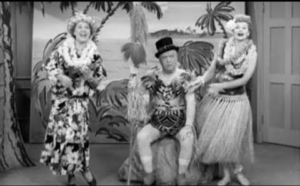
The groundbreaking sitcom I Love Lucy, which aired from 1951 to 1957, not only captivated audiences with its timeless comedy and enduring characters, but it also revolutionized the very foundations of television production and filmmaking
Lucille Ball and her creative team, led by husband Desi Arnaz, pioneered a series of innovative techniques that forever changed the landscape of the small screen. One of the most significant innovations introduced by I Love Lucy was the use of a multi-camera filming approach, which represented a stark departure from the single-camera setups that had dominated television up to that point. By employing three cameras simultaneously, the show’s producers were able to capture the energy and spontaneity of live theater, allowing for seamless transitions between different angles and perspectives. This innovative approach not only enhanced the comedic timing and pacing of the show, but it also paved the way for the dynamic, multi-camera filming style that has become the industry standard for sitcoms to this day.

Furthermore, I Love Lucy was one of the first television programs to utilize the then-new technology of film rather than the traditional live-to-tape method. This decision proved to be a game-changer, as it allowed the show’s producers to take advantage of the superior image quality and the ability to edit and refine the footage after filming. Additionally, the use of film enabled I Love Lucy to be syndicated and rerun, a revolutionary concept at the time that has since become a cornerstone of the television industry.
Beyond these technical innovations, I Love Lucy also revolutionized the creative process of television production. The show’s producers, including Ball and Arnaz, actively collaborated with the writing staff to develop storylines and gags that fully utilized the unique strengths of the ensemble cast. This collaborative approach to content creation set a new standard for television, paving the way for the dynamic, writer-driven sitcoms that have become the hallmark of the medium. The lasting impact of I Love Lucy’s groundbreaking innovations can be seen in the very fabric of modern television, as the techniques pioneered by this iconic show continue to shape the way audiences experience and engage with the small screen.
